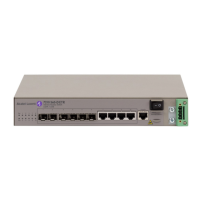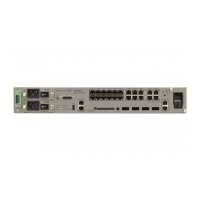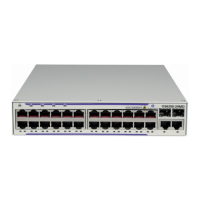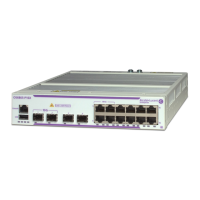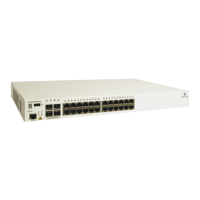MPLS and RSVP
7210 SAS M, T, X, R6, Mxp MPLS Configuration Guide Page 49
mpls-tp a check that there is no other mpls-tp configuration for example, services or tunnels using
mpls-tp on the node, will be performed.
The mpls-tp context is configured as follows:
config
router
mpls
mpls-tp
global-id <global-id>
node-id {<ipv4address> | | <1.. .4,294,967,295>}
[no] shutdown
exit
MPLS-TP LSPs may be configured if the mpls-tp context is administratively down (shutdown),
but they will remain down until the mpls-tp context is configured as administratively up. No
programming of the data path for an MPLS-TP Path occurs until the following are all true:
• MPLS-TP context is no shutdown
• MPLS-TP LSP context is no shutdown
• MPLS-TP Path context is no shutdown
A shutdown of mpls-tp will therefore bring down all MPLS-TP LSPs on the system.
The mpls-tp context cannot be deleted if MPLS-TP LSPs or SDPs exist on the system.
Node-Wide MPLS-TP Identifier Configuration
MPLS-TP identifiers are configured for a node under the following CLI tree:
config
router
mpls
mpls-tp
global-id 100
node-id 100.100.100.1
[no] shutdown
exit
The default value for the global-id is 0. This is used if the global-id is not explicitly configured. If
a user expects that inter domain LSPs will be configured, then it is recommended that the global
ID should be set to the local ASN of the node. as configured under config>router. If two-byte
ASNs are used, then the most significant two bytes of the global-id are padded wsith zeros.
The default value of the node-id is the system interface IPv4 address. The MPLS-TP context
cannot be administratively enabled unless at least a system interface IPv4 address is configured
because MPLS requires that this value is configured.
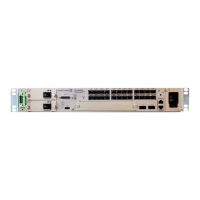
